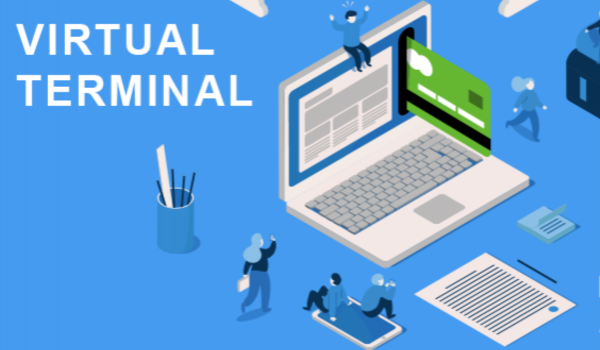
Virtual Terminal Services for Your Business in Pleasanton
In today's digital age, businesses need efficient and secure payment processing solutions to stay ahead in the competitive market. Virtual Terminal Services in Pleasanton offer a convenient way for businesses to accept payments from customers using credit or debit cards without the need for physical card readers or payment terminals. This article will explore the benefits and features of virtual terminal services and how they can enhance your business's payment processing capabilities.
Virtual Terminal Services allow businesses to process payments remotely through a secure online platform. It acts as a virtual point-of-sale (POS) system, enabling businesses to accept payments from customers using their credit or debit cards. This eliminates the need for physical card readers or payment terminals and provides flexibility in accepting payments from anywhere with an internet connection.
How Virtual Terminal Services Work
Virtual Terminal Services work by providing businesses with a web-based interface where they can enter the customer's payment details manually. The process involves entering the cardholder's information, such as the card number, expiration date, CVV, and billing address. Once the information is entered, the payment is processed securely through the virtual terminal service provider, and the funds are transferred to the business's account.
Advantages of Virtual Terminal Services
Virtual Terminal Services offer several advantages for businesses:
- Flexibility and Convenience: Virtual terminal services grant businesses the freedom and adaptability to receive payments from customers at any time and from any location, as long as they have access to an internet connection. This flexibility empowers businesses to cater to their customers' needs conveniently and efficiently, regardless of geographical boundaries or time constraints.
- Cost Saving: Virtual terminal services eliminate the need for expensive hardware, such as physical card readers or payment terminals. This significantly reduces upfront costs for businesses, making it an affordable payment processing solution, especially for small and medium-sized enterprises.
- Wide Range of Payment Options: Virtual terminal services support various payment methods, including credit cards, debit cards, and e-checks. This allows businesses to cater to a broader customer base and offer multiple payment options to enhance the customer experience.
- Streamlined Payment Processing: Virtual terminal services streamline the payment processing workflow by automating tasks such as generating receipts, managing invoices, and organizing transaction records. This improves efficiency and reduces manual errors associated with traditional payment processing methods.
Security Features of Virtual Terminal Services
Security is a crucial aspect of payment processing, and virtual terminal services offer robust security features to protect sensitive customer data. Some common security measures include:
Encryptio
Virtual terminal services in Pleasanton encrypt customer payment data during transmission, ensuring that it remains secure and protected from unauthorized access.
PCI Compliance
Virtual terminal service providers adhere to the Payment Card Industry Data Security Standard (PCI DSS), which sets guidelines for securely handling cardholder data. This compliance ensures that businesses can process payments without compromising customer data security.
Fraud Detection and Prevention
Virtual terminal services employ advanced fraud detection mechanisms to identify and prevent fraudulent transactions. These systems analyze transaction patterns and employ machine learning algorithms to detect suspicious activities and mitigate potential risks.
Integrating Virtual Terminal Services with Your Business
Integrating Pleasanton virtual terminal services with your business is a straightforward process. Here are the general steps involved:
- Choose a reputable virtual terminal service provider that aligns with your business requirements.
- Create an account and complete the necessary registration and verification processes.
- Set up your virtual terminal by configuring payment options, customization preferences, and integration with other business systems if required.
- Train your staff on how to use the virtual terminal and ensure they understand the payment processing workflow.
- Test the system thoroughly to ensure seamless integration and functionality.
- Promote the availability of virtual terminal services to your customers and encourage them to utilize this convenient payment option.
Choosing the Right Virtual Terminal Service Provider
When selecting a virtual terminal service provider, consider the following factors:
- Reliability and Reputation: Choose a provider with a proven track record and positive customer reviews. Look for established companies with a strong presence in the payment processing industry.
- Features and Functionality: Assess the features offered by different providers and determine which ones align with your business requirements. Look for features such as multi-currency support, recurring billing options, and comprehensive reporting capabilities.
- Pricing and Fees: Analyze and compare the pricing structures of various virtual terminal service providers. Evaluate transaction fees, monthly fees, and any additional costs related to the service. It is essential to ensure that the pricing is transparent and aligns with your budget.
- Customer Support: Evaluate the level of customer support provided by the virtual terminal service provider. Prompt and reliable support is essential in case of any technical issues or concerns.
Understanding Transaction Fees and Costs
Virtual terminal services involve transaction fees and costs that businesses need to understand. These fees typically include:
- Transaction fees: A small percentage or fixed amount charged for each transaction processed through the virtual terminal.
- Monthly fees: Some virtual terminal service providers may require a monthly subscription fee for accessing their services.
- Chargeback fees: In case of disputed transactions, chargeback fees may apply if the customer's claim is approved.
- Integration or setup fees: Certain providers may charge a one-time fee for integrating their virtual terminal with your existing business systems.
It is important to carefully review the fee structure and compare it with other providers to ensure you are getting the best value for your money.
Virtual Terminal Services for E-commerce Businesses
Virtual terminal services are particularly beneficial for e-commerce businesses. By integrating a virtual terminal into their website, e-commerce businesses can offer customers a seamless and secure payment experience. This enables them to accept credit and debit card payments online, enhancing the overall customer shopping experience and increasing conversion rates.
Enhancing Customer Experience with Virtual Terminal Services
Virtual terminal services play a crucial role in enhancing the customer experience. By offering a convenient and secure payment method, businesses can improve customer satisfaction and loyalty. Some ways virtual terminal services enhance the customer experience include:
- Providing multiple payment options
- Offering recurring billing for subscription-based services
- Enabling quick and easy payment processing
- Ensuring data security and privacy
- Simplifying invoicing and receipt generation
Tips for Successful Implementation of Virtual Terminal Services
To ensure a successful implementation of virtual terminal services, consider the following tips:
- Thoroughly train your staff on how to use the virtual terminal and handle payment processing tasks.
- Regularly update and maintain your virtual terminal software to benefit from the latest security enhancements and features.
- Monitor transaction records and analyze payment data to identify any potential issues or opportunities for improvement.
- Stay informed about industry trends and advancements in virtual terminal services to leverage new features and optimize your payment processing capabilities.
Future Trends in Virtual Terminal Services
Virtual terminal services continue to evolve, driven by advancements in technology and changing customer expectations.
- Mobile-First Approach: Virtual terminal services will become more mobile-friendly, catering to the increasing number of mobile device users.
- Enhanced Security Measures: As cyber threats evolve, virtual terminal services will incorporate more robust security features to protect customer data.
- AI-Powered Fraud Detection: Artificial intelligence and machine learning algorithms will play a more significant role in detecting and preventing fraudulent transactions.
- Integration with Digital Wallets: Virtual terminal services will seamlessly integrate with popular digital wallets, allowing customers to make payments using their preferred mobile payment apps.
Conclusion
Virtual terminal services in Pleasanton provide businesses with a flexible, convenient, and secure payment processing solution. By leveraging these services, businesses can expand their payment options, improve efficiency, and enhance the overall customer experience. When choosing a virtual terminal service provider, consider reliability, features, pricing, and customer support. Implement virtual terminal services successfully by training your staff, staying updated, and analyzing transaction data. Embrace the future trends in virtual terminal services to stay ahead in the ever-changing payment processing landscape.







